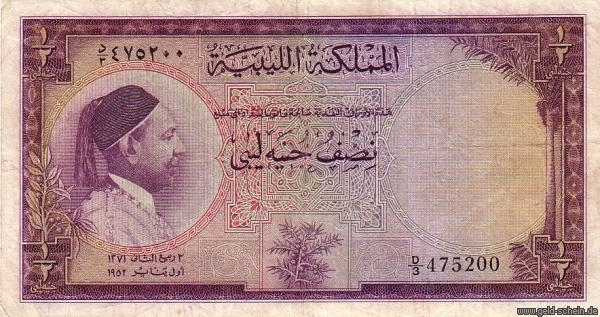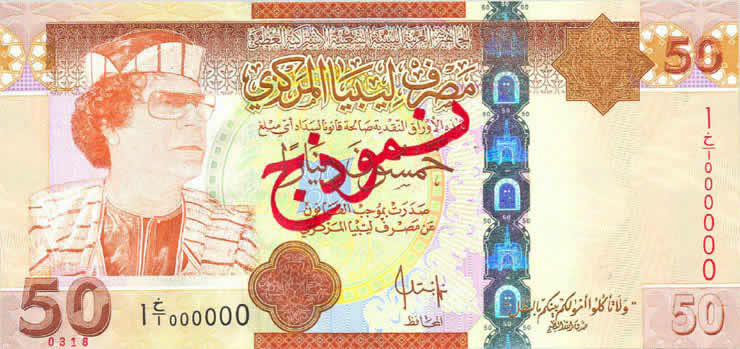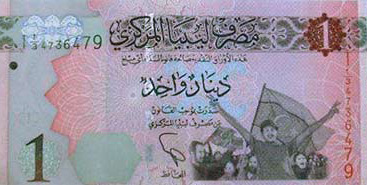We’re going to do two things here. We’re going to give you info you can use and we’re going to give you info that has no practical purpose, but you’ll maybe feel a bit smarter for knowing it, or at least raise a curious eyebrow. Libyan currency is a surprisingly interesting topic, especially given its history in the last ten years. But before we get ahead of ourselves, let’s give you the rundown on the most important stuff.
The Basics of Libyan Currency
- Libya uses the dinar as its basic currency.
- As of September 2021, one dinar is worth approximately $0.22 USD, £0.16 GBP and €0.19 EUR.
- There are 1,000 dirham in a dinar.
- Notes in dinar scale from 1, 5 10, 20 and 50.
- Coins in dirham scale from 1, 5, 10, 20, 50, 100, 250 and 500.
- The code for Libyan currency is LYD
- Many Libyans do not call currency dinar. ‘Jni’ is used in western Libya and ‘Jneh’ is used in eastern Libya.
- Many Libyans do not refer to dirham. A ‘Garsh’ is 10 dirhams.
Alright, that’s the basics. Now we need to get into the history and the trivia!
History of Libyan Currency
We’re not gonna get crazy here and go all the way back to the ancient caliphates and the likes, but let’s at least look to when Libya became a republic. The earliest truly independent Libyan currency, the Libyan pound.

The pound was a little different. It wasn’t like a British pound and it wasn’t like a dinar. You know how I said up there that dirhams are mostly ignored and people talk about ‘garsh’? Well that’s a word that comes from old Ottoman currency, ‘qirsh’, but carried on to the Libyan pound. So that’s one interesting thing to start us off. Many Libyan pound notes also displayed the image of king Idris at this time, which made things awkward after Gaddafi’s coup in 1969. By 1971, new notes were being printed, but the original coins continued all the way to 1975. Probably less prominent exiled-king faces on coins.

Which brings us to the Libyan dinar again. But not the same Libyan dinar… The old one. The one used under the leadership of Colonel Muammar Gaddafi. Like I said, the dinar was introduced in 1971, two years after the coup. Later in 1980, Gaddafi actually replaced the 5 and 10 dinar notes with a new series and gave Libyan citizens just one week to exchange old notes for new, then they’d be wiped off the market. That’s awful, but hey, major savings would be 20 and 50 denominations, right? …Yeaaaah. At this time, those didn’t exist, 5 and 10 were the highest denominations available. And you were only allowed to exchange 1,000 dinar worth total. Crap.
Handy trick that, it got the government a lot more money, even if it sparked some fairly rare (until 2011) protests. It wasn’t until 2002 that the 20 dinar note was released, then 2008 when the 50 dinar note entered circulation. A pretty long time of Libyan currency not having too many options. Still, the value was actually quite strong back in the day. For all his faults, Gaddafi’s focus on developing infrastructure and investing in oil saw rapid economic growth. In 1971, the dinar was worth slightly more than the British pound and only got better until 1980, when it began a gradual decline.

In 2012, old currency began to be withdrawn. Given the 50 dinar note had Gaddafi’s face on it by this point, I see why they wanted to change things up. At least this time Libyans were given two months to exchange for the new Libyan currency. In 2013, they released some new notes, which is where you get that impressive image above. Glorifying the 2011 revolution, while some notes featured the likes of famous anti-Italian resistance leader Omar al-Mukhtar. With that, we’re about back up to date. With… One exception. During the second Libyan civil war that’s just sort-of ended, the opposition government in eastern Libya had their own coins minted in Russia. With the peace agreement, they’re probably defunct.
Want to visit the country? Then check out our Libya Tours.





